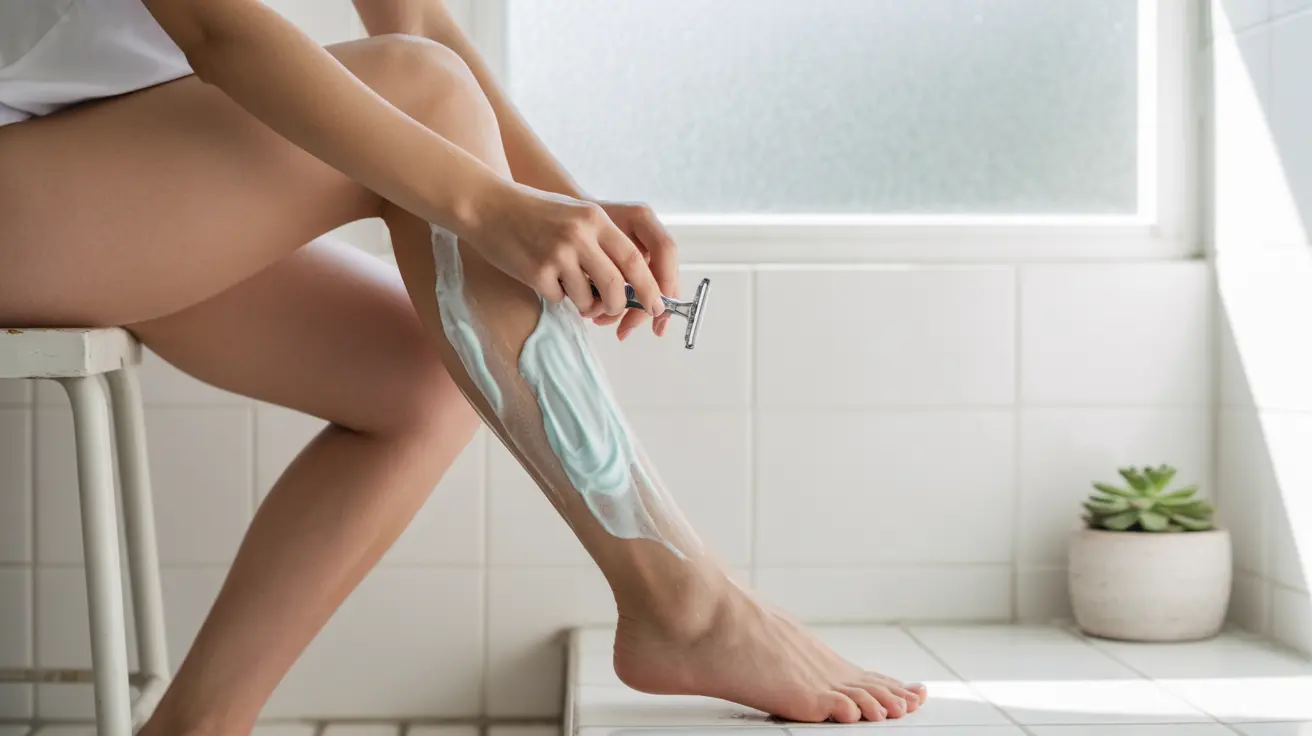Achieving silky smooth legs through shaving is an art that requires proper technique and care. Whether you're new to shaving or looking to perfect your routine, understanding the right approach can make a significant difference in your results and help prevent common issues like razor burn and ingrown hairs.
This comprehensive guide will walk you through everything you need to know about how to shave your legs effectively, from preparation to aftercare, ensuring you get the best possible results while protecting your skin.
Preparing Your Legs for the Perfect Shave
Proper preparation is crucial for achieving a smooth, irritation-free shave. Start by soaking your legs in warm water for at least 3-5 minutes. This helps soften the hair and open up your pores, making the shaving process easier and more effective.
Before reaching for your razor, gently exfoliate your legs using a mild scrub or loofah. This removes dead skin cells and helps prevent ingrown hairs by lifting the hair away from the skin's surface.
Choosing the Right Shaving Products
Select a high-quality shaving cream or gel specifically designed for sensitive skin. Avoid using regular soap, as it can be drying and doesn't provide adequate lubrication. Apply a generous amount of shaving cream to ensure your razor glides smoothly across your skin.
Mastering the Shaving Technique
Using a sharp, clean razor, begin shaving from your ankle upward, working in sections. While many prefer shaving against the hair growth for a closer shave, start with the grain if you have sensitive skin to minimize irritation.
Key Steps for a Perfect Shave
- Use light, steady strokes without applying excessive pressure
- Rinse the razor frequently to prevent clogging
- Pay extra attention around ankles and knees
- Keep your skin taut while shaving curved areas
- Reapply shaving cream as needed
Essential Aftercare Steps
Once you've finished shaving, rinse your legs thoroughly with cool water to close the pores. Pat your legs dry gently with a clean towel – avoid rubbing, as this can cause irritation.
Apply an alcohol-free moisturizer or post-shave balm immediately after drying. This helps lock in moisture and soothes the skin, reducing the risk of irritation and dryness.
Maintaining Your Shaving Routine
Regular maintenance of your shaving tools and following a consistent routine are essential for the best results. Store your razor in a dry place and consider using a razor shield to protect the blades between uses.
Frequently Asked Questions
How do I properly prepare my legs before shaving to avoid irritation and ingrown hairs?
Soak your legs in warm water for 3-5 minutes, then exfoliate gently with a scrub or loofah. Apply a quality shaving cream, and ensure you're using a clean, sharp razor. This preparation helps prevent irritation and ingrown hairs by softening the hair and removing dead skin cells.
What is the best direction to shave leg hair to get a smooth shave without razor burn?
For the smoothest results with minimal irritation, start by shaving in the direction of hair growth (usually upward from ankle to knee). If your skin isn't particularly sensitive, you can then go against the grain for a closer shave, always using light pressure and keeping the skin taut.
How often should I replace my razor blade to maintain safe and effective leg shaving?
Replace your razor blade every 5-7 shaves or at the first sign of dullness. If you notice tugging, pulling, or increased irritation, it's time for a new blade. Never use a rusty or damaged razor.
What aftercare steps should I follow to soothe my skin and prevent dryness after shaving my legs?
Rinse with cool water, pat dry gently, and immediately apply an alcohol-free moisturizer or post-shave balm. Avoid tight clothing immediately after shaving and stay hydrated to maintain skin moisture from within.
How can I adjust my shaving technique if I have sensitive skin or thick leg hair?
For sensitive skin or thick hair, always use a sharp razor and shave with the grain first. Consider using a pre-shave oil under your shaving cream for extra protection. Take your time and avoid passing over the same area multiple times. Use products specifically designed for sensitive skin, and consider waiting longer between shaves to give your skin time to recover.




